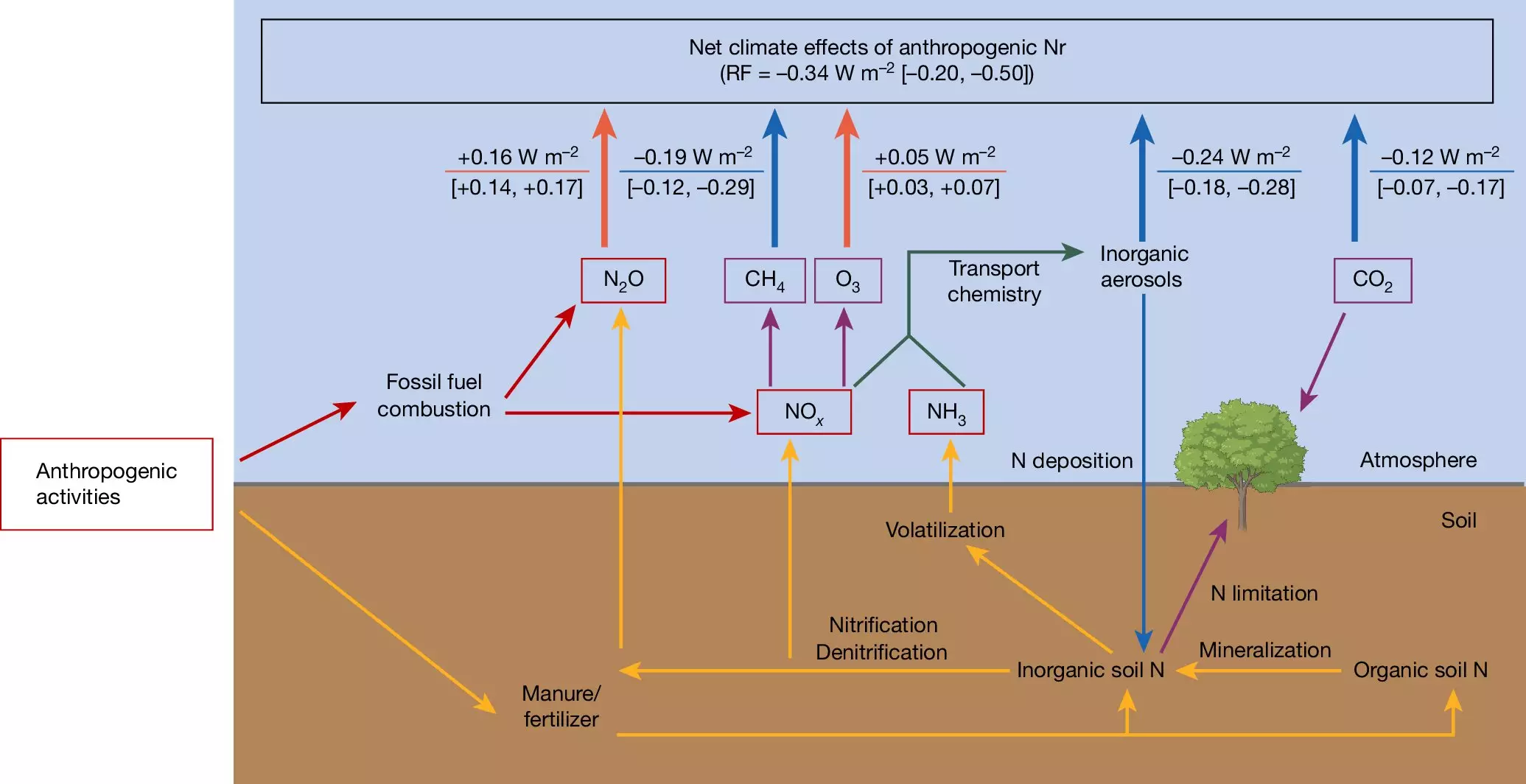In the realm of environmental sciences, nitrogen stands out as an essential yet paradoxical element. Its role in agriculture as a fertilizer is irrefutable, propelling productivity and sustaining global food systems. However, the nitrous oxides resulting from both fossil fuel combustion and synthetic fertilizers have garnered attention for their detrimental environmental impacts. Recent research from an international team led by scientists from the Max Planck Institute for Biogeochemistry sheds light on the surprising nuance of nitrogen’s effect on climate—revealing a chilling net cooling effect, which complicates the narrative surrounding nitrogen’s environmental footprint.
Understanding Reactive Nitrogen: A Complex Compendium
Nitrogen’s existence in various reactive forms creates a multi-dimensional challenge for scientists studying its climate effects. Reactive nitrogen is distinct from the inert nitrogen that comprises about 78% of our atmosphere, which remains neutral regarding climate. Contrastingly, the compounds arising from reactive nitrogen exhibit both warming and cooling properties, leading to a complex layering of effects. Among these is nitrous oxide, an influential greenhouse gas approximately 298 times more effective than carbon dioxide in trapping heat, owing to its durability in the atmosphere.
Yet, nitrogen oxides—primarily produced through fossil fuel combustion—display a different character; they contribute to the formation of fine particles that reflect sunlight, consequently cooling the Earth. Additionally, ammonia from agricultural runoff and fertilizers not only benefits plant growth by enhancing CO₂ absorption but also contributes to cooling effects. This duality necessitates a thorough examination of nitrogen’s roles in atmospheric interactions, as simplified narratives can obscure the multifaceted realities of this element.
Conducted under the leadership of scientists Sönke Zaehle and Cheng Gong, the Max Planck study meticulously evaluated the various impacts of nitrogen on climate, particularly emphasizing the “negative radiative forcing” attributed to anthropogenic nitrogen inputs. The researchers discovered a cooling impact of approximately -0.34 watts per square meter from human-induced nitrogen, juxtaposed against the higher, more damaging warming attributed to greenhouse gases from fossil fuels—averaging 2.7 watts per square meter based on recent IPCC reports.
This startling contrast reveals how human agricultural practices inadvertently lead to a net cooling effect on the atmosphere, complicating the perception of nitrogen as solely harmful. While this discovery may seem to validate the continued application of nitrogen in agriculture, it comes with essential caveats linked to health, biodiversity, and ecological integrity.
The Cost of Nitrogen Inputs: A Cautionary Tale
While the findings present a nuanced view that recognizes nitrogen’s cooling effects, they do not absolve nitrogen emissions from their destructive consequences. Zaehle emphasizes that acknowledging the cooling aspect of nitrogen should not lead to complacency regarding its widespread ecological impacts. Nitrogen emissions remain detrimental to human health, contribute to biodiversity losses, and further degrade the ozone layer—an essential shield against harmful solar radiation.
Moreover, the non-linear interactions between nitrogen inputs and climatic systems underscore a critical truth within climate science: simplifying the relationship between greenhouse gases and temperature changes risks misrepresenting the realities of climate change. The implications of nitrogen’s roles demand a careful balancing act; while human-induced nitrogen cools, it is simultaneously linked to broader environmental crises that must be addressed comprehensively.
Moving Forward: Rethinking Agricultural Practices
In light of these complexities, the recommendation to reduce nitrogen emissions comes as a clarion call to rethink agricultural practices. The study suggests that improving efficiency in nitrogen use as fertilizer could significantly reduce nitrous oxide emissions—streamlining a path to more sustainable farming practices.
Transitioning toward eco-friendly methods would not only yield ecological benefits but also alleviate the pressures of excess nitrogen on health and biodiversity. Nevertheless, this is not a standalone solution; the simultaneous reduction of other greenhouse gases, particularly CO₂ and methane resulting from fossil fuel consumption, is vital for genuine climate stability.
As scientific discourse on nitrogen continues to unfold, it becomes crucial for policy-makers, scientists, and farmers to engage in dialogue that bridges the gap between agricultural productivity and environmental stewardship, paving the way for a healthier planet while ensuring food security.

